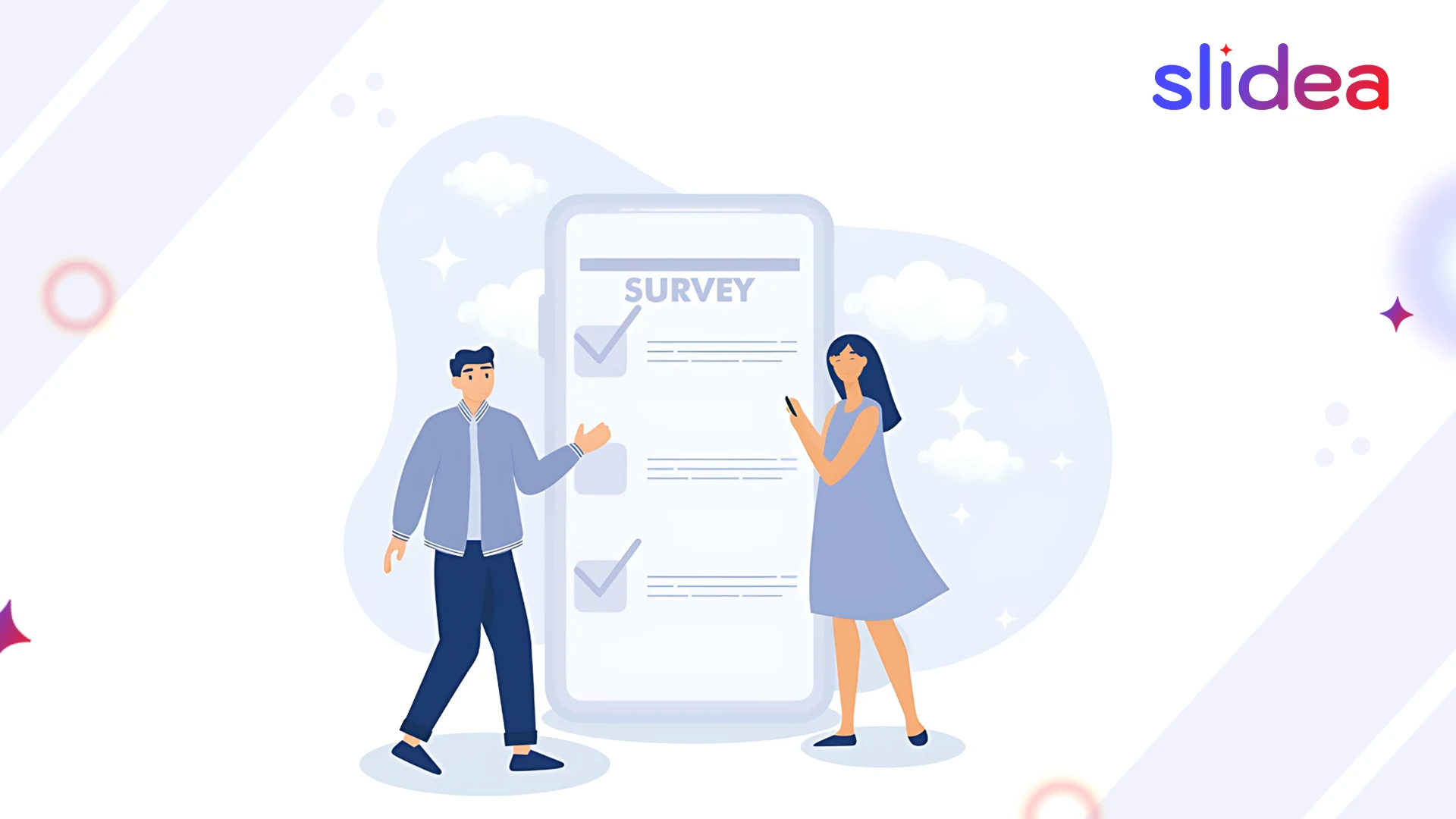“Good questions open minds. Great ones start conversations.”
Great business conversations don’t come from one-word answers. They begin when people feel safe and encouraged to share what they really think.
From team meetings and client pitches to interactive workshops, the way you ask questions directly influences the depth of responses and the direction of the discussion. This is where asking open-ended questions in presentations becomes a vital communication skill.
A single thoughtful question can spark conversations, inspire ideas, and build trust in a business meeting.
Still, many professionals wonder: How do I ask good open-ended questions that lead to real answers, especially in interactive presentations where real-time responses matter?
Here’s how you can approach it with clarity and confidence.
What Are Open-Ended Questions?
Open-ended questions are the kind of questions that don’t have a fixed answer.
You can’t just say “yes” or “no”. You have to explain, describe, or share your opinion.
For example:
“What do you think about this project timeline?”
That’s open-ended. It invites thoughts.
But
“Is the project timeline okay?”
That’s closed-ended. You’ll probably just hear “yes” or “no”.
Open-ended = more conversation
Closed-ended = quick answer
Difference Between Open and Closed-Ended Questions
| Feature | Open-Ended Questions | Closed-Ended Questions |
| Answer Type | Long, detailed | Short, specific |
| Example | “What challenges do you face daily?” | “Do you face challenges?” |
| Purpose | Explore thoughts, feelings | Confirm facts |
| Useful For | Brainstorming, team talks, presentations | Surveys, reports, quick checks |
| Response Style | Personal and creative | Direct and often yes/no |
Where Can You Use Open-Ended Questions in Business?
1. Team Meetings
Use open-ended questions to encourage team members to share opinions, give suggestions, or raise concerns.
Example:
“What can we do to make our meetings more productive?”
2. Client Conversations
Ask open-ended questions during client meetings to understand their needs better and build stronger relationships.
Example:
“How can our service better support your goals?”
3. Strategy Planning Sessions
Use them to gather diverse ideas, identify gaps, and involve everyone in decision-making.
Example:
“What opportunities do you think we’re not exploring yet?”
4. Feedback Collection
Instead of simple rating scales, use open-ended prompts to collect detailed suggestions and honest feedback.
Example:
“What would you like to see improved in our process?”
5. Workshops and Trainings
Boost interaction and learning by encouraging participants to reflect and respond in their own words.
Example:
“What was your biggest takeaway from this session?”
6. Business Presentations
Use open-ended questions in business presentations to encourage thoughtful responses and deeper discussions.
Example:
“What is one question you still have about today’s topic?”
Why Are Open-Ended Questions Important in Business Presentations?
Speaking with clients or leading internal team discussions, the right open-ended question can shift the entire tone of a session, turning passive listeners into active participants.
Here’s how open-ended questions make a real impact:
- Encourage honest, thoughtful input
- Build trust by making people feel heard
- Open the door for real, meaningful discussions
- Lead to better decisions with diverse ideas
- Turn a one-way talk into an interactive experience
How to Ask Open-Ended Questions in Business Presentations
| Step | What to Do | Example |
| 1 | Start with “What,” “How,” or “Why” | “What challenges are we facing?” |
| 2 | Keep it clear and simple | “How can we improve?” |
| 3 | Avoid yes/no style questions | “What do you like?” vs “Do you like this?” |
| 4 | Focus on learning and understanding | “Why did this not work?” |
How to Create Open-Ended Questions in Slidea
Instead of calling on people one by one or waiting for someone to speak up, use an open-ended slide to invite real-time responses from everyone in the room.
1. Sign up and get started
- Use your Google or email account to sign in and create a Slidea account.
2. Create a presentation
- Click the “+ New Presentation” button.
- Give it a name like “Real Conversations in Business” or “Business Feedback Matters”.
3. Add an open-ended question slide
- Click “Add Slide” → select Open-Ended Question.
4. Type your question
- Keep it clear and interesting.
(Example: “What’s one thing we could do better?”)
5. Preview your slide
- Use the Preview option to see how the question will appear to participants before presenting it live.
6. Start your presentation
- Share the screen and show the QR code or link or number code
7. Let your audience respond
- They can type their answers using their phone or device.
8. Show answers live
- Their thoughts will appear on screen in real time.
9. Use the responses to lead your talk
- Read, react, and build a meaningful discussion.
Conclusion
Asking open-ended questions in business isn’t just about gathering answers, it’s about starting real conversations that lead to better ideas, stronger teams, and smarter decisions.
When you ask the right kind of question, you show that you value people’s thoughts. You give space for honest input. And you make every meeting or presentation more meaningful.
It’s simple, smart, and it gets people talking.
FAQs
Q1: Why do people avoid open-ended questions?
They think it takes too much time or fear getting off-topic. But with interactive tools, it’s easy to manage.
Q2: Can open-ended questions improve engagement?
Yes! They make people feel heard and valued.
Q3: Is it okay to mix question types?
Definitely. Start with open-ended, then close with a yes/no to confirm.
Q4: What tool can I use to ask open-ended questions live?
Try Slidea. It’s made for interactive, real-time answers in business presentations.




Leave a Comment
Your email address will not be published. Required fields are marked *